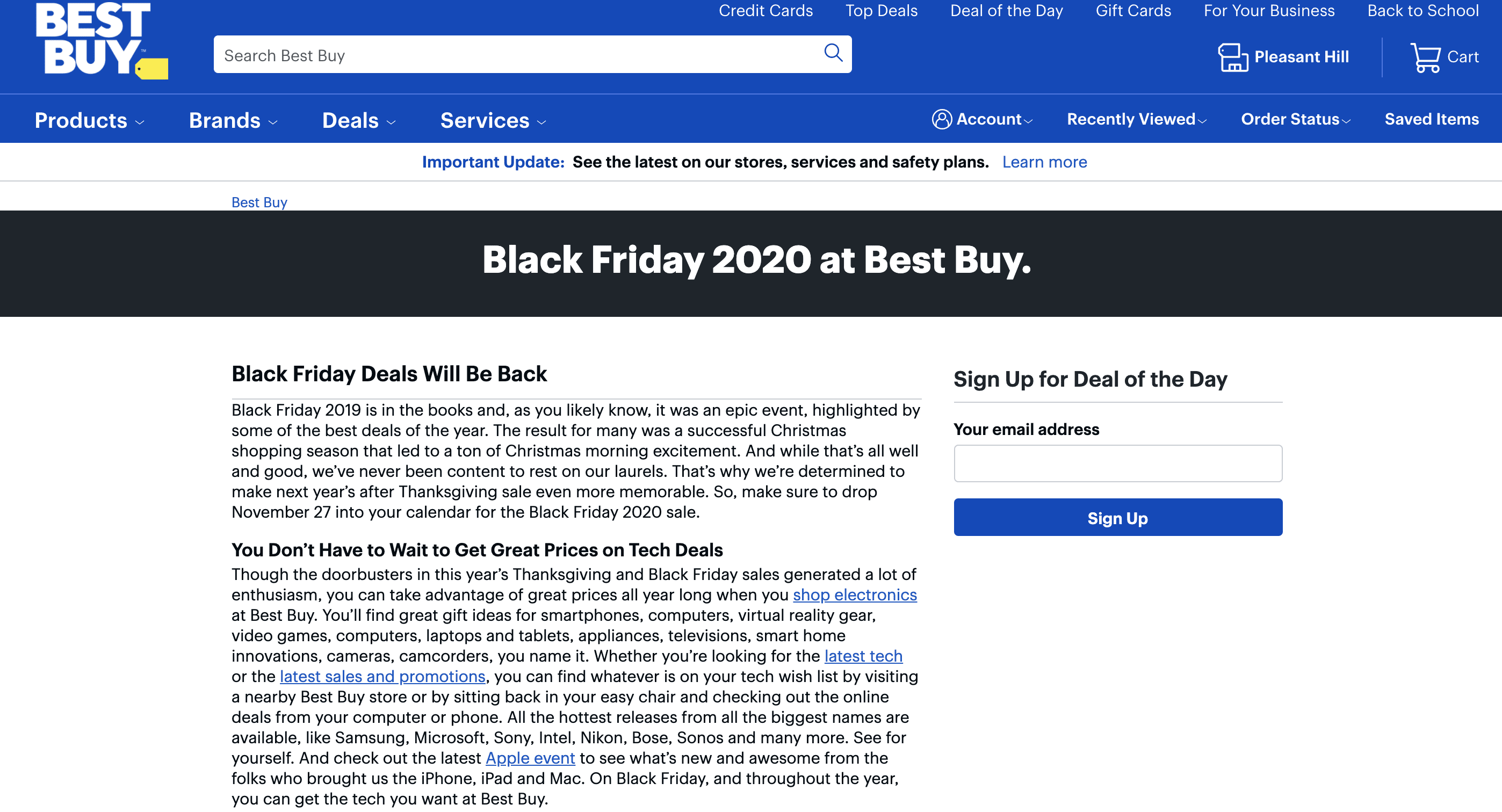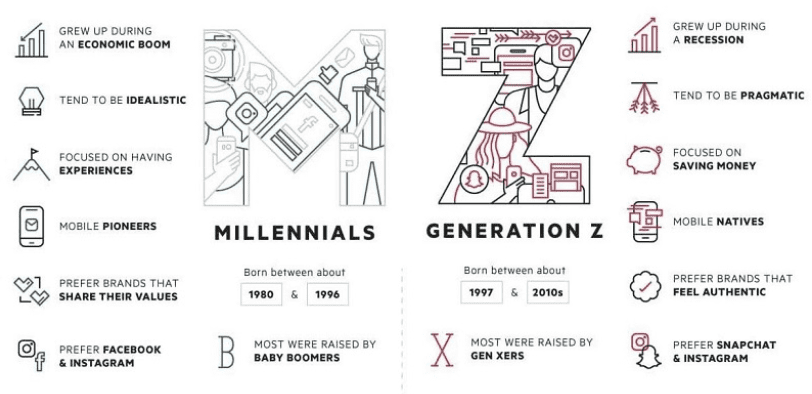The unknowns of this year’s holiday shopping season are plenty. But while the pandemic has stopped expected retail operations in its tracks, we do know that consumers will be spending for the holidays, no matter what.
The solution to succeed in this uncertainty isn’t forecasting product popularity, it’s preparing. If you understand the roadblocks in your way, you can plan effectively, so your brand can approach the holiday season predisposed to perform.
In this three-part blog series, we’ll be addressing common roadblocks to expect as you prepare for a Q4 like never before.
First on the list? Product scarcity.
Product Scarcity: When FOMO Gets Real
Hurry, supplies are limited!
It’s human nature. When we’re told we can’t have something, our must-buy-now determination gets stronger.
The fear of missing out (FOMO) has been used as a marketing tactic for years: McDonald’s has teased customers with the McRib for limited engagements since the early 1980s and out-of-production products, like Crystal Pepsi, have skyrocketed online, with bottles selling for hundreds of dollars on eBay.
Of course, savvy marketers often take advantage of this innate, competitive behavior to leverage growth in product sales. The fear of missing out on a deal or product during traditional Black Friday sales has encouraged families to cut Thanksgiving dinners short, opting instead to camp outside shopping malls for the doors to open.
While FOMO is typically exploited in marketing, with brands offering exclusive products, private invitations, and limited-time offers, the scarcity that we are referencing is less conniving. When a product is legitimately limited, scarcity marketing takes another form: exclusivity.
It’s a tactic that many luxury car dealers, like Porsche, employ around limited-edition cars. It’s a position that high-end retailers, like Hermès with its coveted Birkin bag, use to drive mystique and rarity. And it works!
Scarcity marketing drives up prices and demand around products that will run out.
A great example of this is during the holiday season of 1996, the year that the “Tickle Me Elmo” toy was released. Demand for the toy was dismal until its showcase on the Rosie O’Donnell Show in early October 1996, which coincided with the holiday shopping season. Mattel had only produced 400,000 units, so it was unprepared for this rise in demand. As a result, consumers who had acquired an Elmo sold the product independently, via classified ads for $2,500.
As we lean into 2020’s holiday shopping season in our current economic and social state, scarcity marketing will no longer be an advanced and psychologically devious tactic. Scarcity will be a pervasive reality. Chinese production is limited. Other warehouses and facilities across the U.S. have limited capacity as well. With reduced supply for products across the board, brands will have an issue of supply, meaning the customers won’t be able to purchase everything they want.
Marketers can do a lot of things, but manifesting products out of thin air sadly isn’t one of these capabilities.
Instead, focus on these three recommendations for addressing product scarcity.
1. Embrace transparency to drive loyalty and customer LTV
COVID-19 transformed customer loyalty. Plain and simple. When the world initially shut down, many consumers strayed from their normal shopping patterns to stockpile alternative products.
But many were faced with out-of-stock notices. These out-of-stocks drove consumers towards other brands; in fact, more than 75% of consumers have tried new brands, places to shop or methods of shopping during the pandemic. Product availability was the number one reason consumers sought new retailers.
But changed shopping habits aren’t the only trends we’re seeing. Customers are responding to brands that connect. Brands that are authentic and apologetic. The emotional connection that transparency drives isn’t just repeat business—it’s loyal business.
In approaching product scarcity, it’s a brand’s duty to let their customers know—as early as possible—that products will be limited. If issues with delivery arise, and scarcity was not pre-communicated, it will likely cause immense friction with customers. Friction, at any point in the customer experience, causes churn and lost business.
The formula for transparency is simple, but not easy. It’s a combination of the retailer having what the customer wants, delivering good service, and creating a convenient experience.
The only way for this to happen seamlessly is to message your capabilities, honestly and openly. Connect with empathy, and you’ll be more likely to circumvent customer frustration and win loyalty.
2. Start your promotions early to give your shoppers a head start
If you thought that Black Friday shopping on Thanksgiving Day was excessive, we have some good news to share: This year, stores like Target, Dick’s Sporting Goods, and Walmart are closing down in-store operations on Thanksgiving Day. Sales that have typically drawn enormous crowds and encouraged horrific shopping injuries, could present major safety risks during the pandemic.
To Black Friday traditionalists, retail holiday shopping closures on the most “sacred shopping day” of the year seem alarming;—wouldn’t closed doors mean lost revenue? For companies like Dick’s and Best Buy, shutting brick-and-mortar stores down isn’t a profit concern.
In fact, sales during the pandemic have radically raised retail revenue: Dick’s Sporting Goods reported that e-commerce sales tripled in the second quarter as a result of consumers spending more time exercising at home in response to the pandemic. Best Buy boasted a 242% jump in sales—the strongest online sales in the history of the company—as shoppers built up their remote work stations.


“You Don’t Have to Wait to Get Great Prices on Tech Deals” according to Best Buy’s Black Friday messaging.
The beauty of omni-channel businesses—especially in this case—is that, when one channel closes, there are many other channels still open. Best Buy, for instance, will compensate for Thanksgiving Day closures by offering holiday deals earlier in the season.
Take a hint from these industry leaders’ corporate decisions and start communicating discounts early. Be the brand that brings “Black Friday” deals to the table before the mad rush. In addition to fast-tracking holiday sales, you’ll be more likely to ensure that the gift-buying and discount-shopping experience is seamless.
Of course, you may be concerned that early discounts might be a gamble. If you discount your items now, what if you’re the only one? What if other companies don’t follow? How will this impact your bottom line?
Even if your competitors wait, the point of early action is to communicate empathy, reserve the customer’s budget and drive long-term loyalty.
One of the best tips we’ve ever been given is, “The best way to maximize the opportunity is to minimize failure.” Communicate your product scarcity and your discounts early to capture the minds, hearts and wallets of customers.
How early? Now.
3. Know your customers and acknowledge their differences in shopping behavior
-


See, your sociology degree came in handy!
Online shopping was increasing (gradually) even before COVID-19 began. When stay-at-home orders were announced, the slow rise in e-commerce adoption led to a huge and immediate boost of online shopping across the board. Of course, brands are having to evolve to meet changing consumer needs.
But before implementing a blanket strategy for holiday marketing, it’s important to understand how consumer shopping behaviors have shifted.
For instance, here are some key generational trends to keep in mind when it comes to e-commerce:
- Boomers are now past the initial learning curve of online shopping and over 62% will be digital buyers this year, so a seamless checkout experience will be key to earning their dollars.
- Millennials are the most concerned about the pandemic’s impact, leading them to change their behavior more dramatically than other generations, which includes cutting back on spending, stocking up on items, and spending less on experiences.
- Gen Z spends 2X-3X more shopping on social channels than the average consumer, with purchases made via Instagram and Snapchat taking the lead.
Discrepancies in shopping habits between generations have always existed. But the rapid rise of e-commerce, combined with the pandemic and recession, has exacerbated these nuances. Build your product marketing strategy, and your customer experience, based on the latest research to ensure your shoppers are confident and comfortable this season.
Tackle Product Scarcity to Achieve Holiday Marketing Success
This year, holiday shopping will be much different than in years past. Instead of looking at added complexity as a roadblock, see it as an opportunity to differentiate your brand. By sending your customer the right message, about the right product, via the right channel, as early as you can, you can circumvent product scarcity and thrive.
For the most up-to-date mobile and email messaging techniques, take a look at our “Top 10 Email and Mobile Campaigns Every Brand Needs.” And once you work out your holiday marketing master plan, let Iterable help you stick the landing!
Of course, product scarcity isn’t the only challenge this season, so stay tuned for the second installment of our holiday readiness series!

































